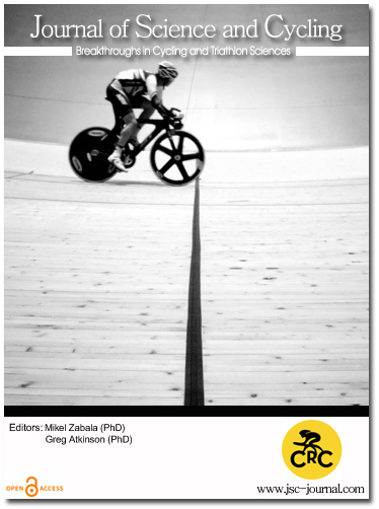Differences in execution and perception of training sessions as experienced by (semi-)professional cyclists and their coach
Keywords:
sRPE, RPE, Load management, high-performance, monitoringAbstract
This study aimed to investigate whether (semi-)professional cyclists’ execution of a training program differs from the coach’s designed training program. Also, the study sought to ascertain, in instances where the training sessions were indeed executed as designed by the coach, whether the perception of the cyclists differed from the intention of the coach. This study highlights the differences between the coach and the individual cyclist. In total 747 training sessions were collected from 11 (semi-)professional cyclists. Rating of Perceived Exertion (RPE) and session Rating of Perceived Exertion (sRPE) were compared with intended RPE (iRPE) and intended sRPE (isRPE), planned by the coach. Pearson’s correlation, regression coefficients and Typical Error of Estimate (TEE) were used to identify differences between the executed and planned training sessions. Moderate to large TEEs were noted between executed and intended sRPE, which indicates that cyclists do not always execute the training program planned by the coach. Furthermore, when the training was executed as planned by the coach, very large correlations but moderate to very large TEEs were noted between cyclists’ (s)RPE and the coach’s i(s)RPE, with unique individual regression coefficients. This indicates that the relationship between RPE and iRPE is unique to each cyclist. Both the different execution and perception of the training program by the individual cyclists could cause an impaired training adaptation. Therefore, the coach must pay attention to the perception of training sessions by the individual cyclist. Improved individual management of training load could result in the optimization of the proposed training program.
Downloads
Published
How to Cite
Issue
Section
Copyright (c) 2021 Journal of Science and Cycling

This work is licensed under a Creative Commons Attribution-NonCommercial-NoDerivatives 4.0 International License.
Authors contributing to Journal of Science and Cycling agree to publish their articles under a Creative Commons CC BY-NC-ND license, allowing third parties to copy and redistribute the material in any medium or format, and to remix, transform, and build upon the material, for any purpose, even commercially, under the condition that appropriate credit is given, that a link to the license is provided, and that you indicate if changes were made. You may do so in any reasonable manner, but not in any way that suggests the licensor endorses you or your use.
Authors retain copyright of their work, with first publication rights granted to Cycling Research Center.






